The Sketchbook
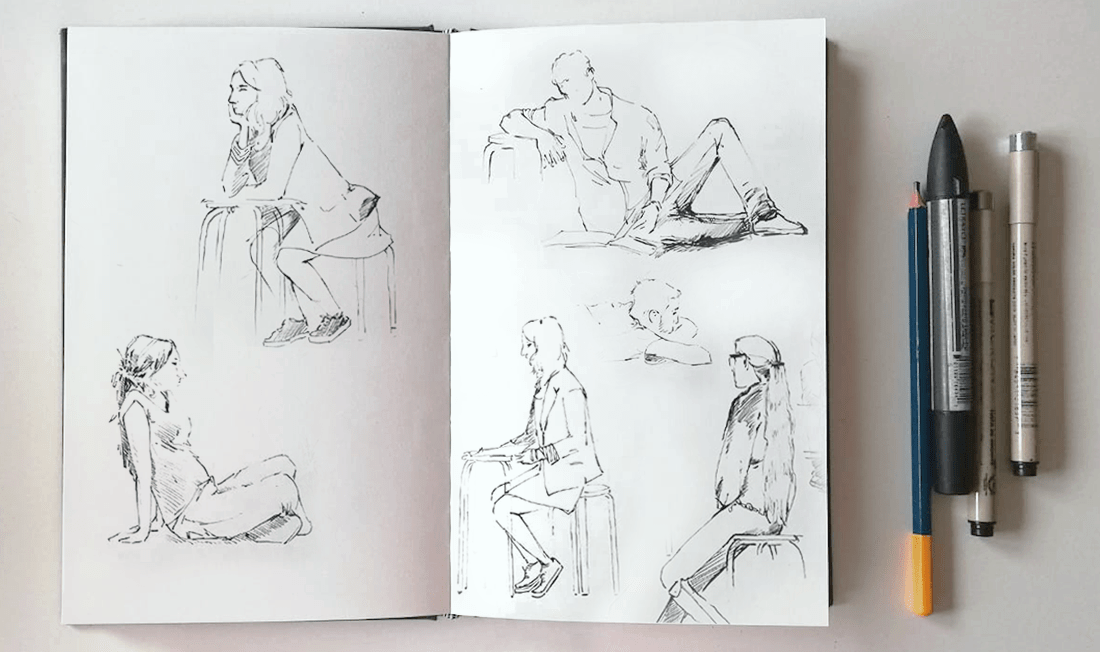
What is a sketchbook used for?
The sketchbook is an essential for any artist. By constantly drawing in it, we reveal and develop our artistic style, showing a part of ourselves, our everyday life.
Let your ideas flow, write down sentences or topics that inspire you, sketch out your first drafts without worrying about the layout.
The sketches that will be made there are often done with a certain speed and there's a notion of simplicity in execution to ultimately improve your drawing skills, to get to the essence... and have fun!
The perfect support to experiment with your drawings
Without pressure, this notebook helps us experiment. Don't be afraid to keep a sketchbook rather than drawing on loose sheets of paper, as that's the best way to lose or damage your drawings! You can test different mediums, observe a variety of subjects, and do your drawing exercises in it.
It is easy to carry, so it's suitable for accompanying us on a daily basis. If you get bored during long trips, take out your sketchbook and observe around you: it's the opportunity to study the environment (people, architecture, nature...) that will help you improve through practice and consistency.
The mistake is to start with the premise that you won't create a drawing good enough to be kept. On the contrary, if your drawing doesn't seem useful at the moment, it might be later with a new perspective.
Recommended materials
1) If you need to step out or travel light, you can opt for smaller notebooks (below A4 size).
The same goes for drawing tools. Fill your bag or pencil case with the materials that have the least constraints and take up little space.
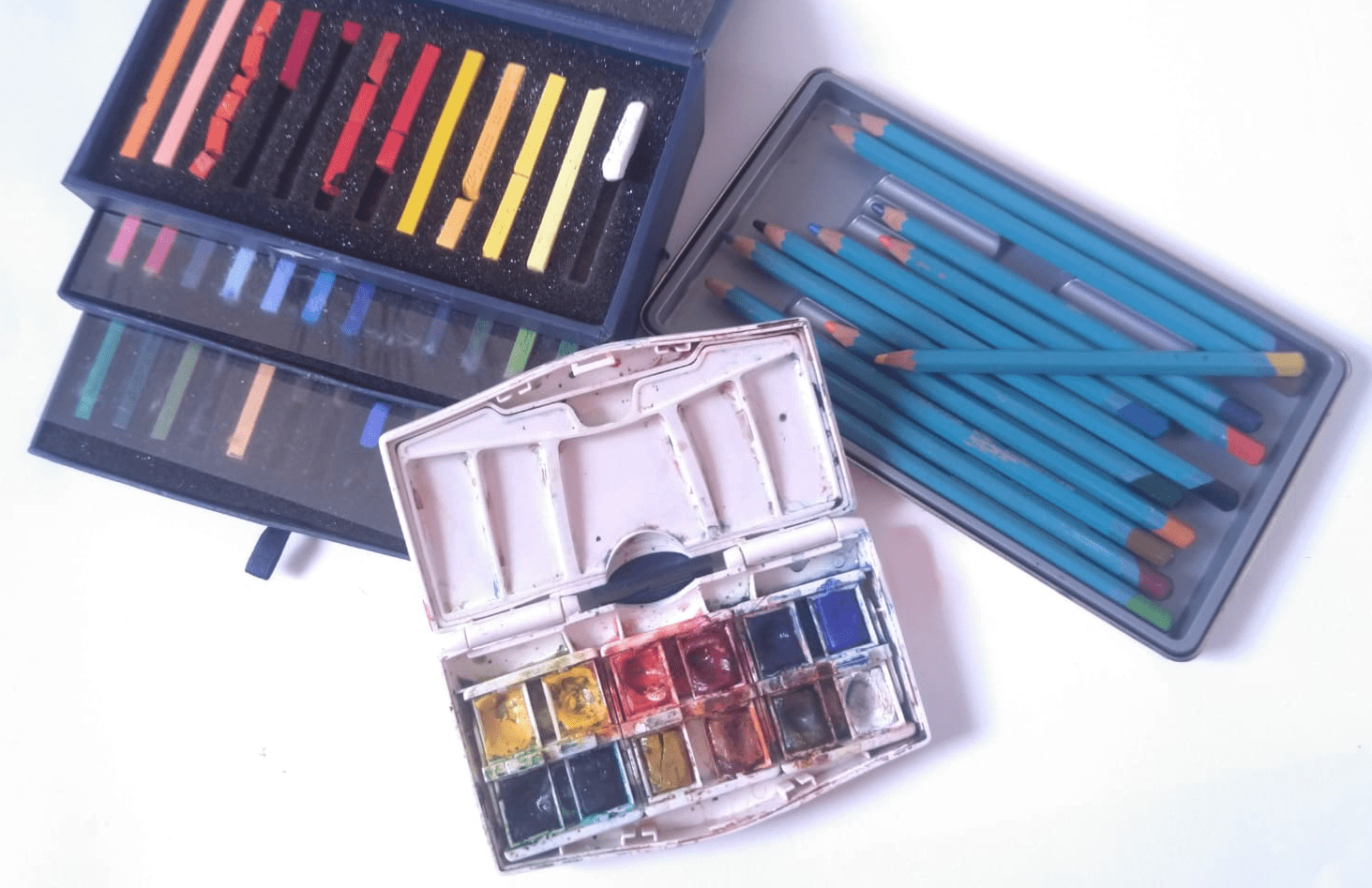 As above; small boxes of crayons, pastels, or quick-drying paints (like watercolor/gouache in pans).
As above; small boxes of crayons, pastels, or quick-drying paints (like watercolor/gouache in pans).
- Markers:
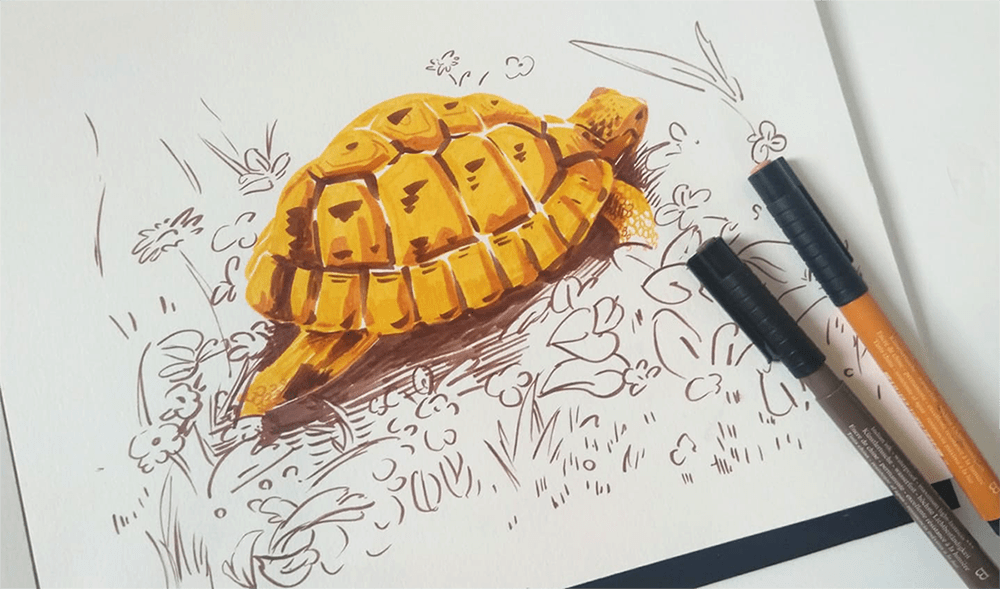
- Pencils (colored, graphite, watercolor pencil)
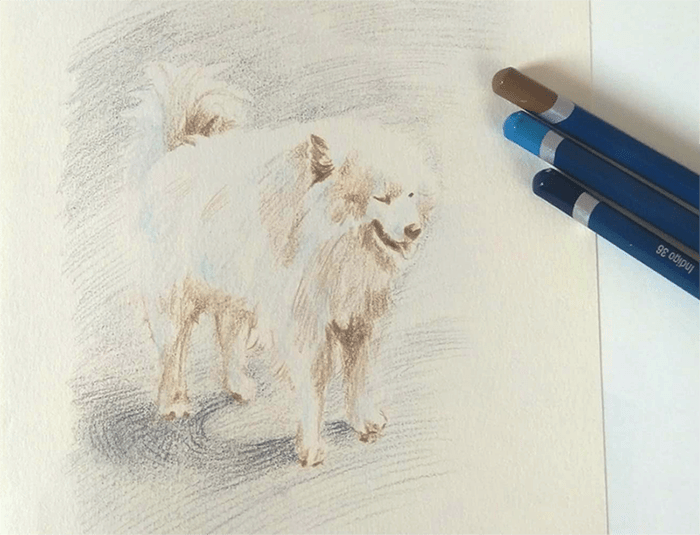
- Water reservoir brushes: they're affordable and there's no need to walk around with a pot of water. Think about it!
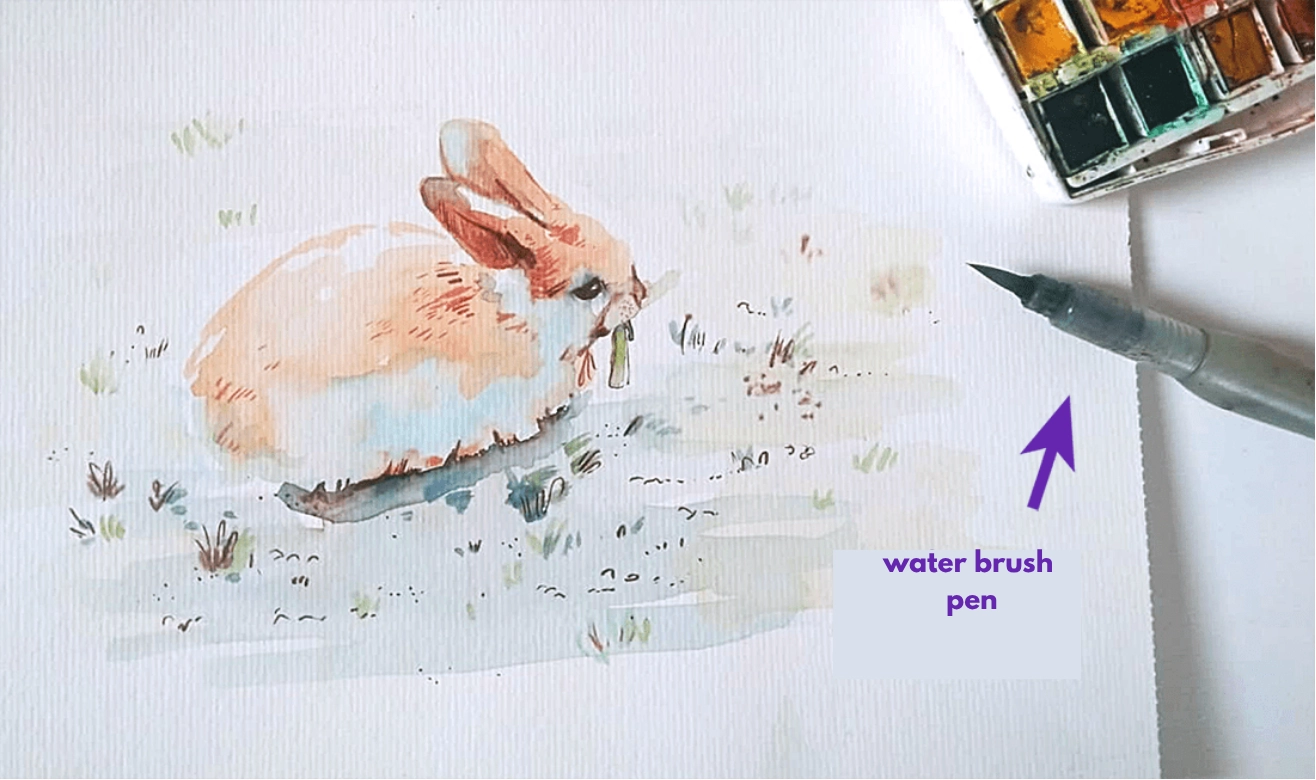
2) For indoor use (or if you have the opportunity outdoors with some preparation), almost all media is available to you.
Tip: to protect drawings made with dry/oily pastels, charcoal, or any other medium that could deteriorate or damage the sketchbook, you can space your drawings out by a page or add protection using tracing paper or a small sheet on top. You can also create a window by cutting out the desired space in a page to create a flap:
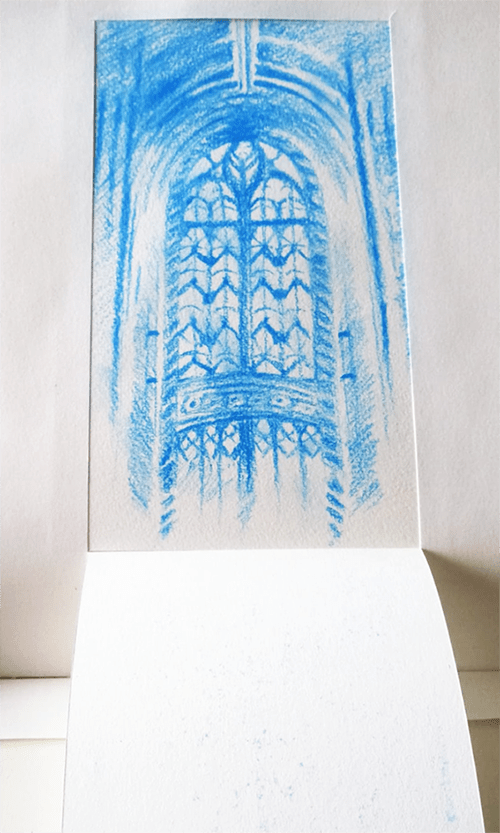
Do not hesitate to draw on the double pages in order to take advantage of all the space when using mediums that dry quickly:
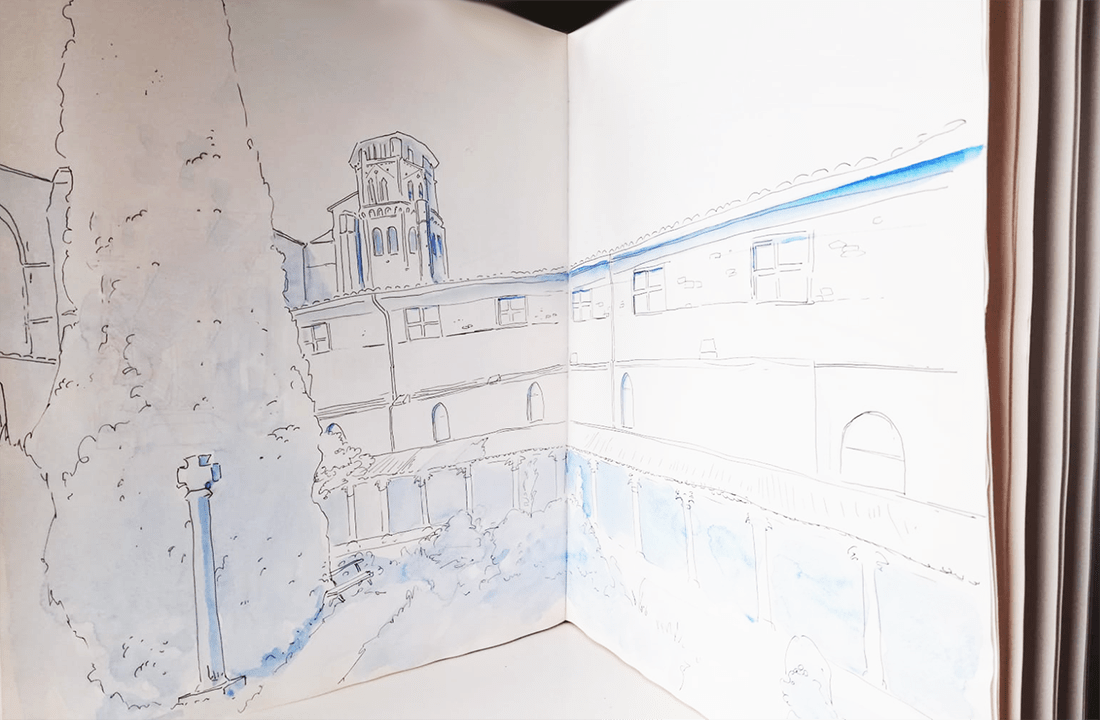
There is an article about the different drawing materials that might interest you, feel free to check it out!
Drawing on different papers
You don't have to stick to white paper, try other drawing techniques with various weights and colors of paper: kraft, black, off-white, gray:
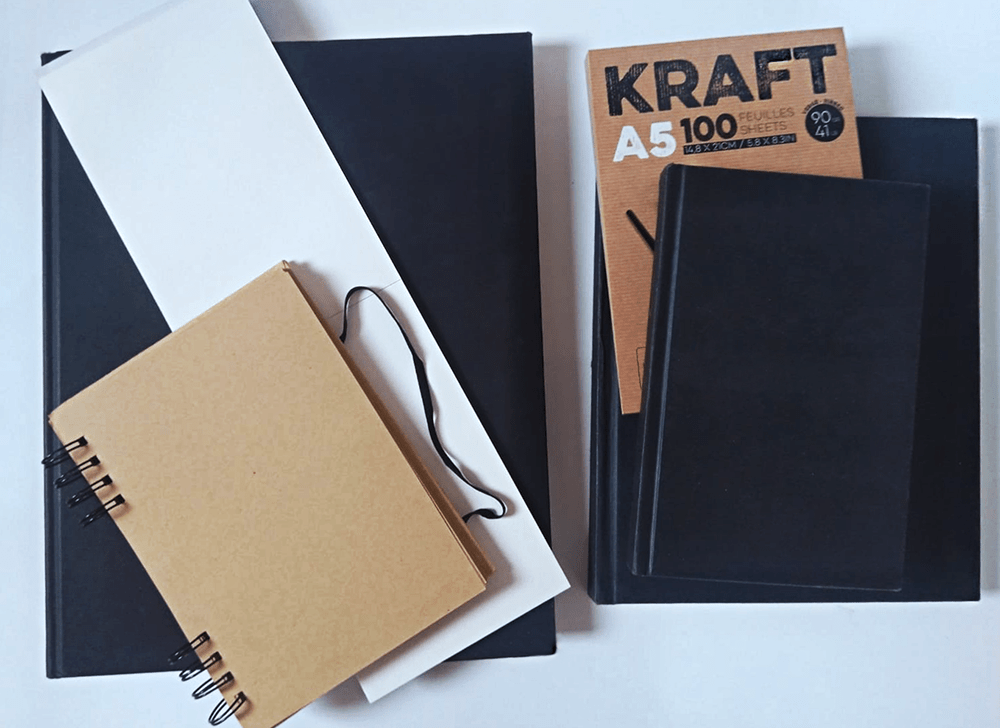
On kraft paper, white really stands out. You can try duochrome drawings by choosing a color, then use white to highlight the lights or the central subject.
1) Lay out the main lines of your drawing: here, I am drawing the general lines of the distant mountains, the hill in the foreground, and sketching my subject: a small village.
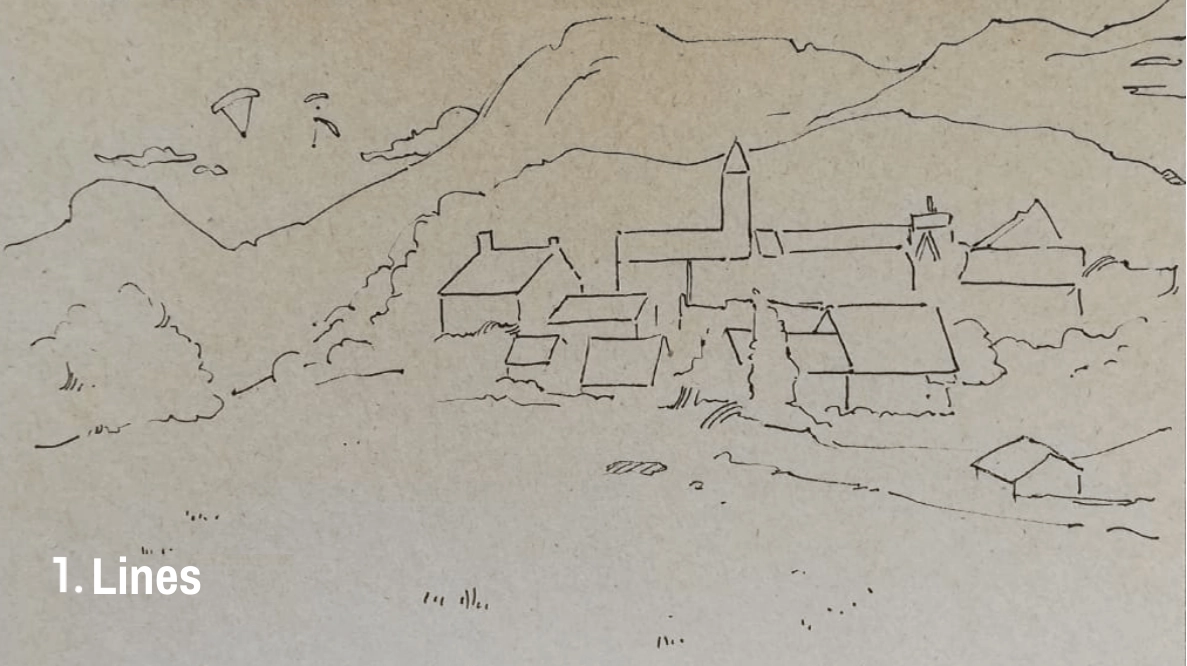
2) I layer the mid-tones and ink more densely in the darkest areas, emphasizing my subject: the village.
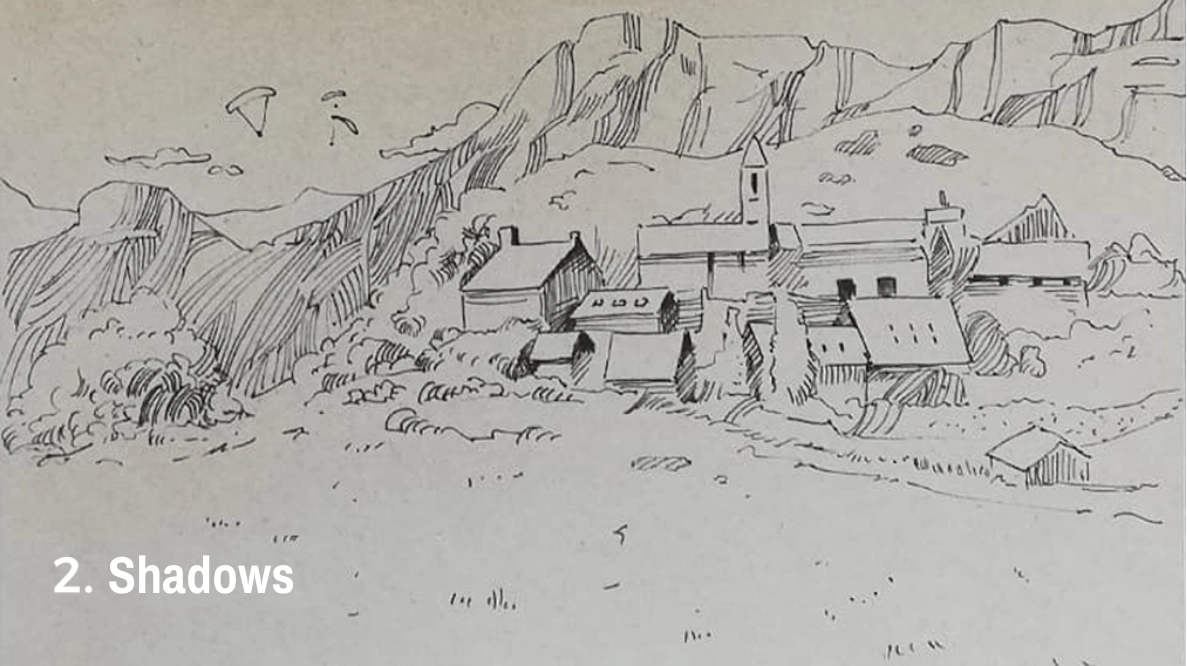
3) I add white Posca highlights that bring out my subject.
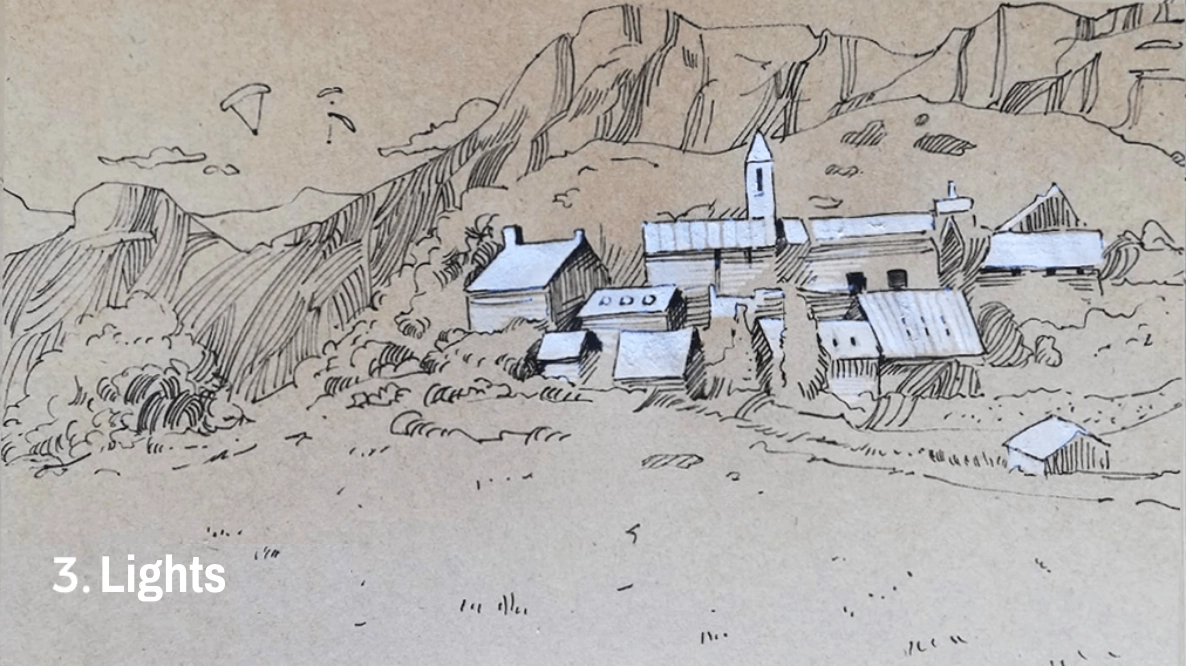
Painting in a sketchbook
If you are fond of painting, opt for paper with a weight of around 140g to 200g. Since you can't stretch the paper like a canvas, you can expect the pages to warp a bit, but it's not a big deal.
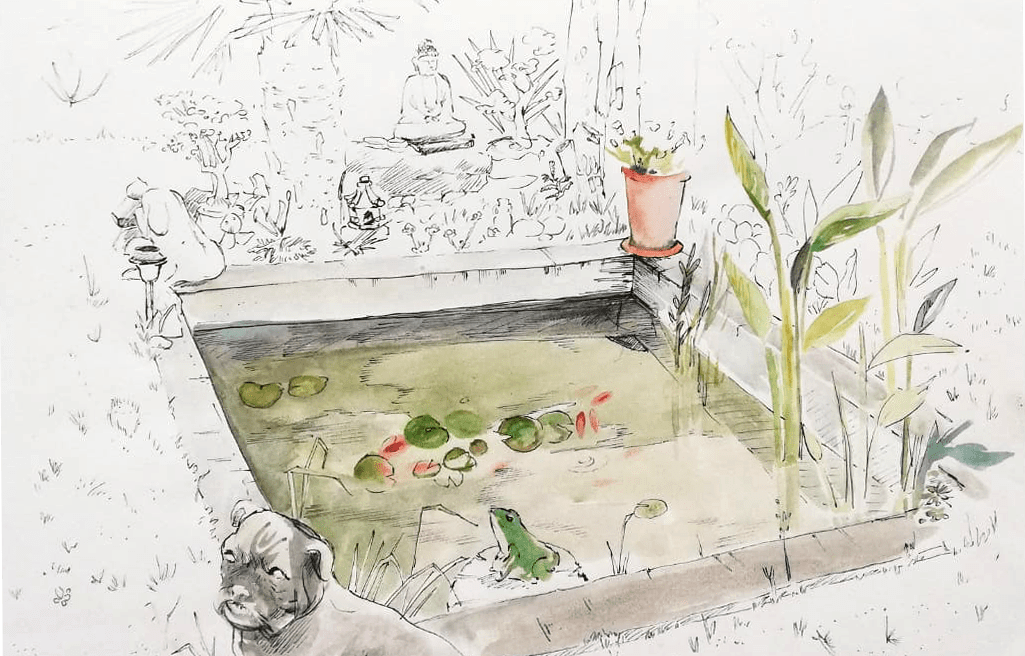
Personally, I like to use notebooks with paper that has a medium thickness so I can switch between different media, and why not mix fine felt-tip pens and watercolor, like here?
Day after day, set yourself goals
With a sketchbook in hand, you can add your imaginative drawings, but also "sketch" the real world. Drawing in it is a good way to have a retrospective of the work accomplished. If you engage in regular drawing exercises, you will see your progress and mistakes page after page; in short, it’s a summary of your journey that you can be proud of!
You can use your notebook to set yourself challenges: create a drawing once a day for a month, draw a female face, learn to draw specific parts of the body, etc.
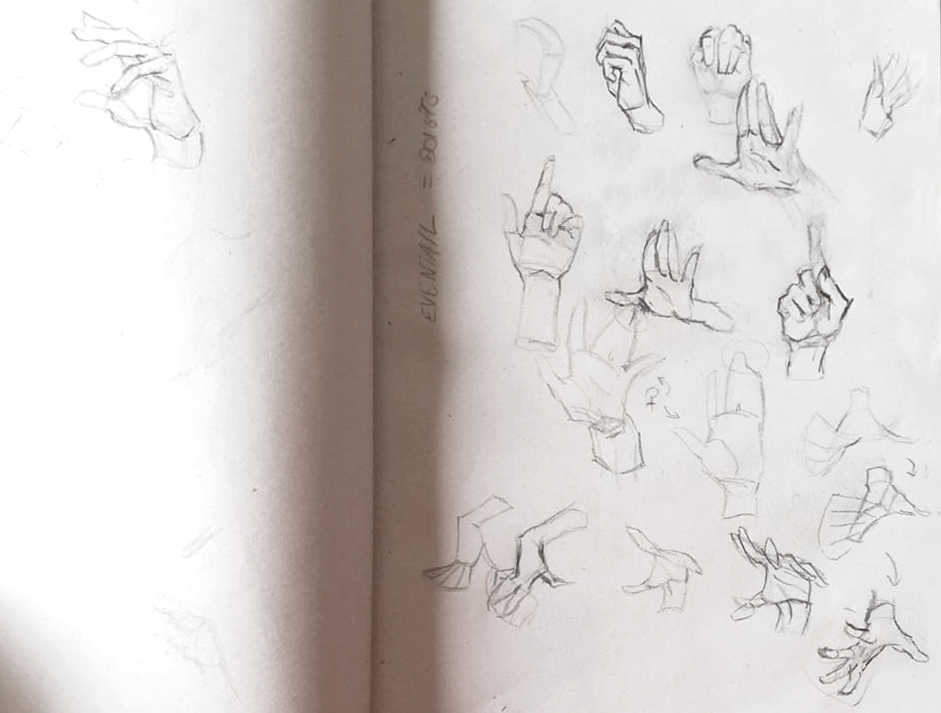
One of the best ways, in my opinion, to learn to draw is by doing observational drawing; that is, dealing with concrete subjects rather than copying a photograph. Sit in a cafe, on a bench, or on a bus and sketch! This will help you capture the essence of a movement, a silhouette, a light etc. because you have to go fast...
More simply, set goals to achieve with your notebook:
1) I've chosen to practice drawing poses as my subject.

2) Without dwelling on the layout, I quickly draw the characters with simple lines. I can zoom in on my subject or draw it in full.
3) I continue the exercise over time in order to master the subject.
The sketchbook as a diary
By filling your sketchbook, you create your own idea bank that you can consult and reuse whenever you like.
It is imbued with your experiences and your artistic sensitivity. Both a work of art when taken as a whole, and a personal journal where one places their thoughts, texts, ideas, drawings... It is the first draft of our reflection.
Illustrator and writer: Vincyane Belin


super cool
super great
I'm going to make one too